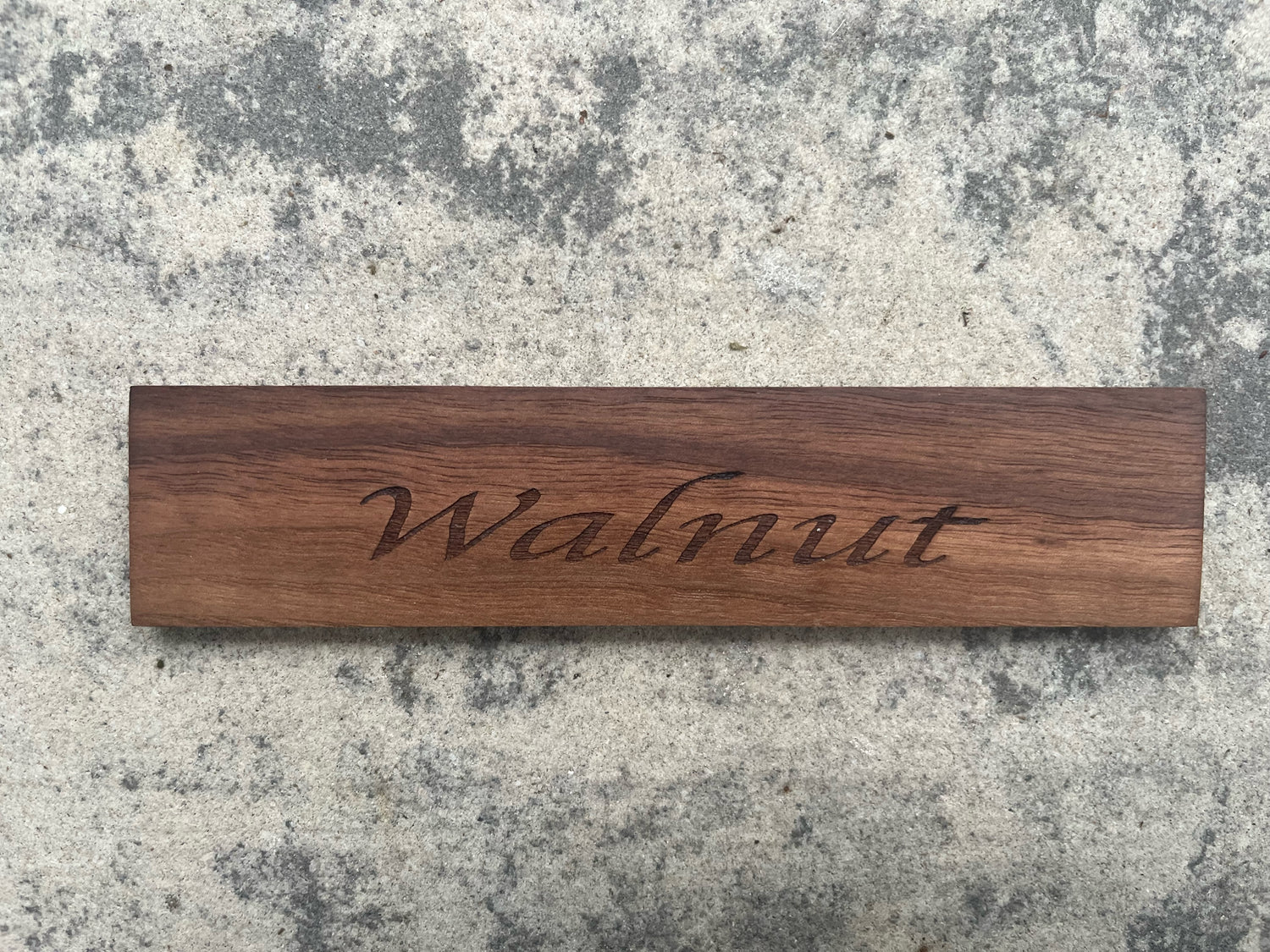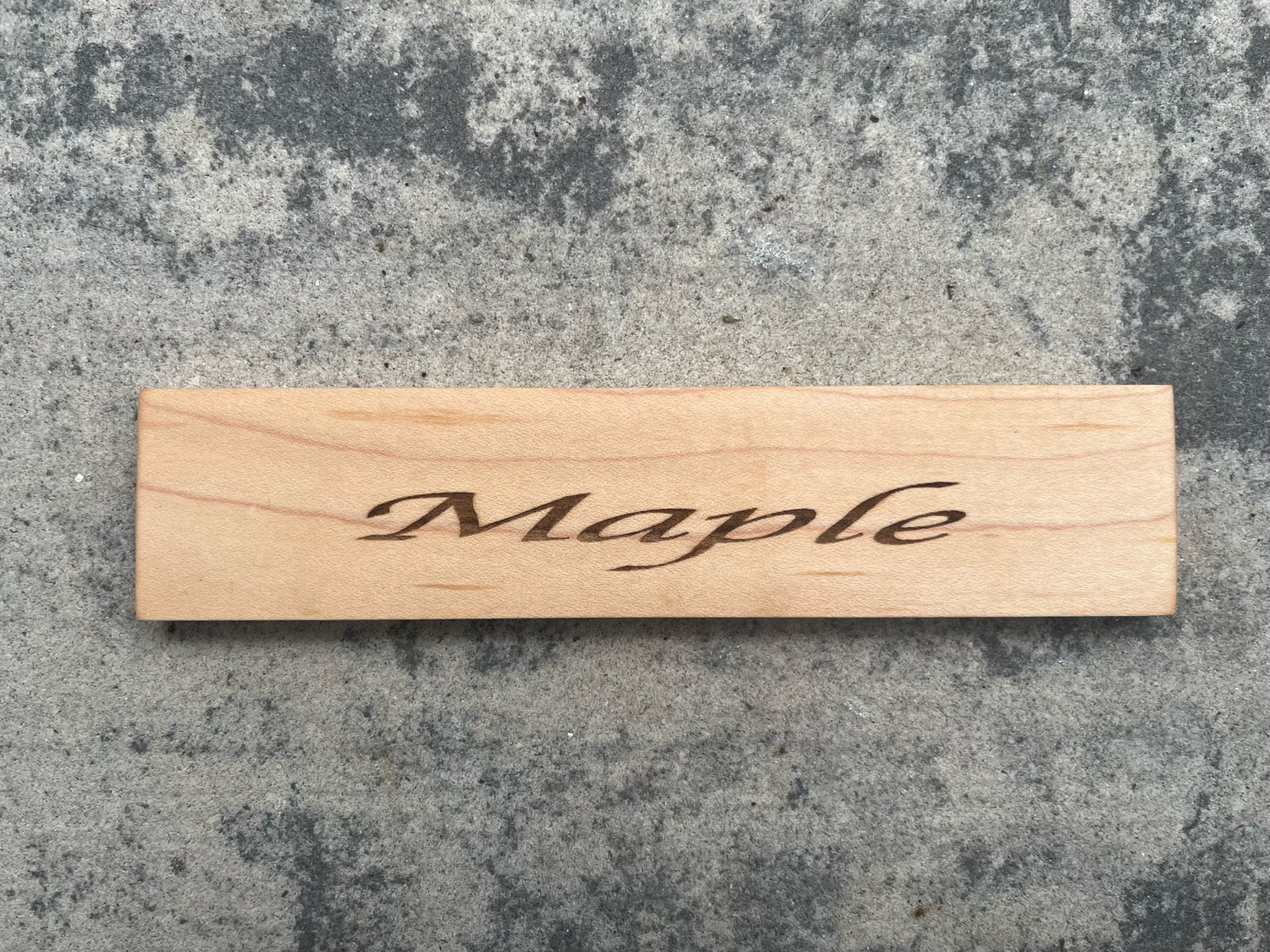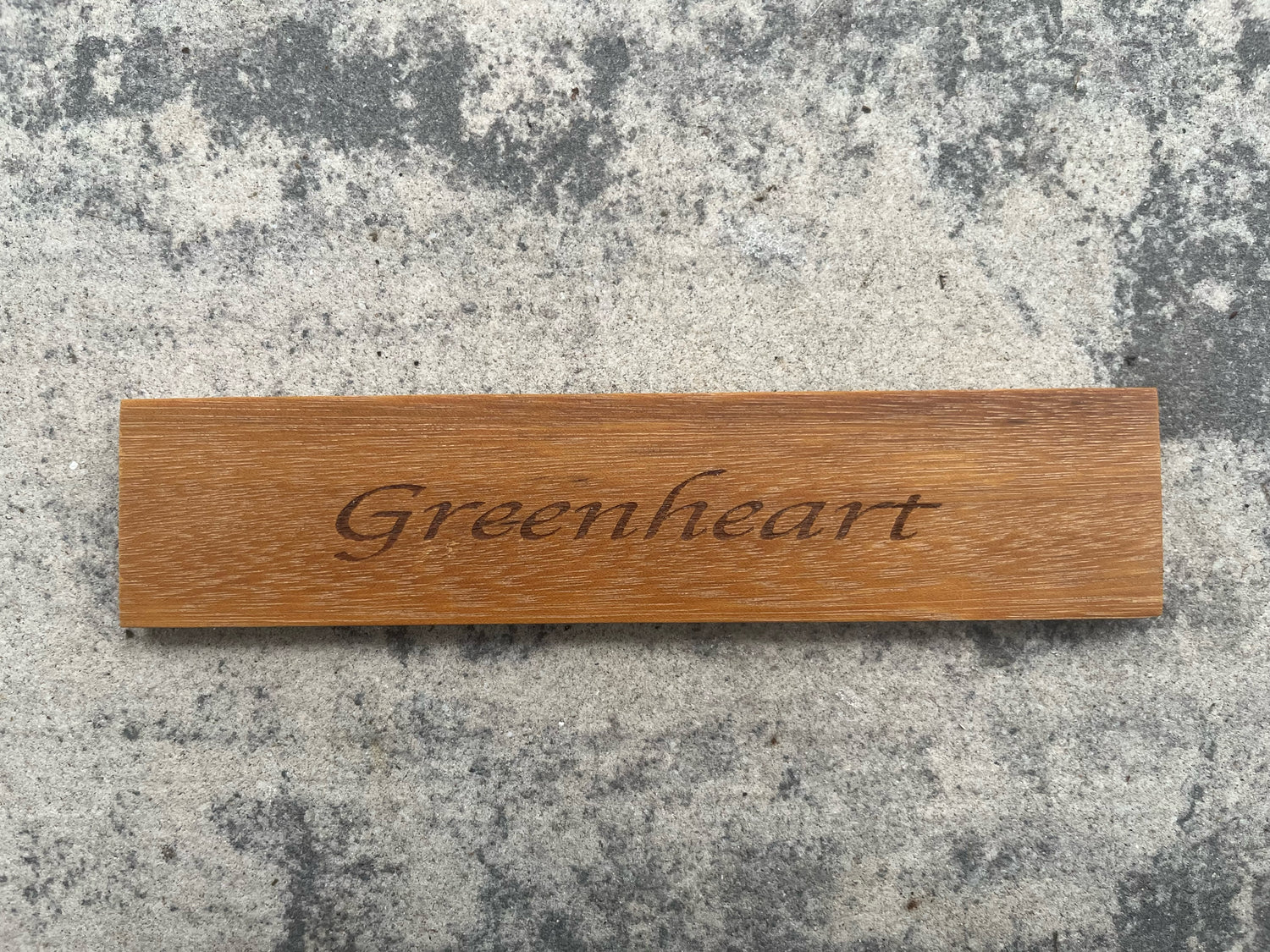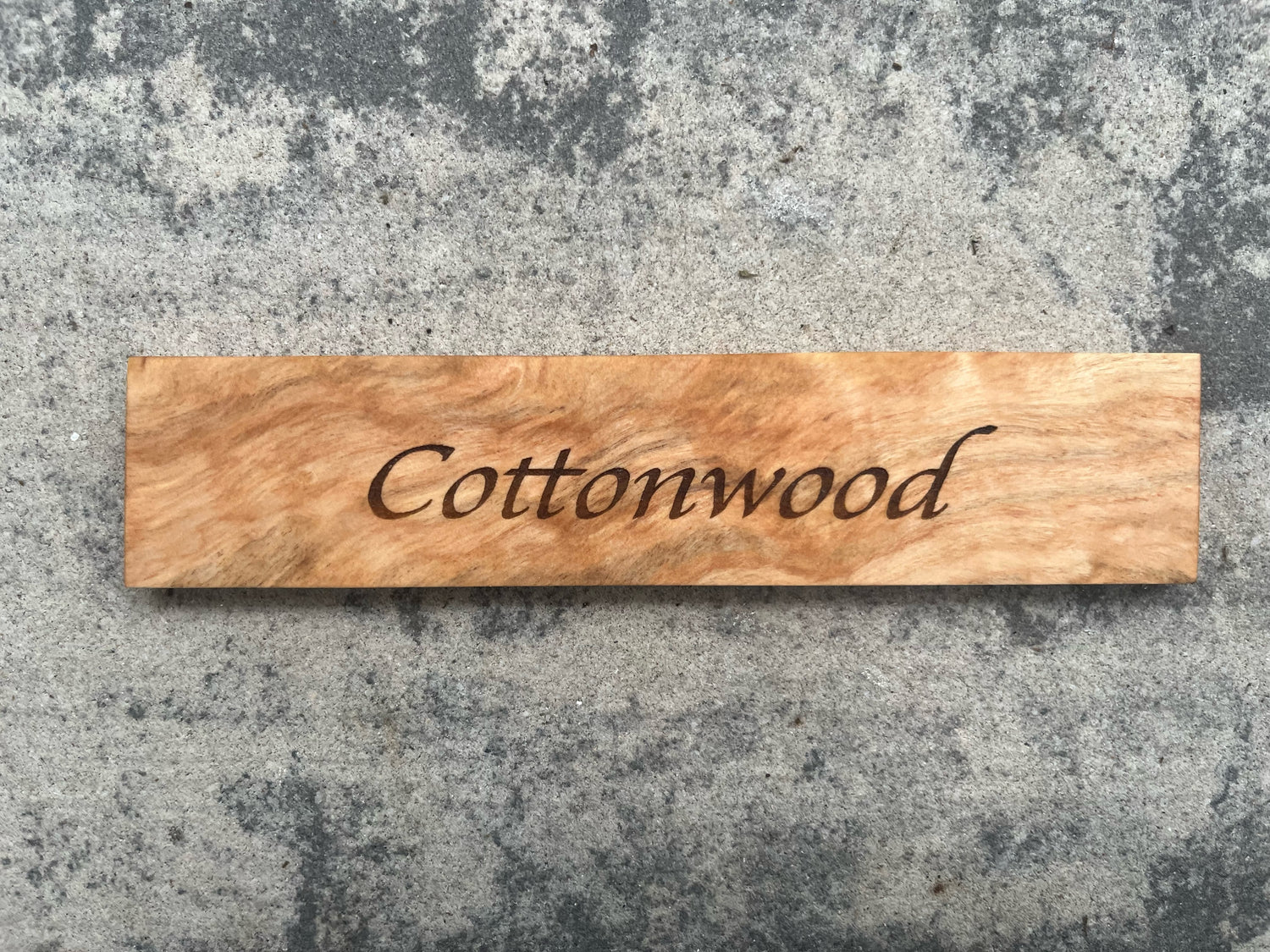About Our Wood

Walnut
Black Walnut, or simply walnut, can range in color from lighter pale brown to a dark chocolate brown with dark streaks. It is a relatively dense wood with a Janka Hardness score of 1010 and provides a durable surface for cutting boards. We source our walnut from a sawmill in Anne Arundel County, Maryland.

Cherry
Cherry has long been a favorite choice for fine furniture. It is a light pinkish brown when freshly cut, and darkens significantly to a medium reddish brown with exposure to light. It is relatively dense with a Janka score of 950 and provides a durable surface for cutting boards. All of our cherry is sourced from Anne Arundel County, Maryland.

Maple
Maple, or hard maple, is one of the hardest woods that we use in our cutting boards and projects with a Janka score of 1450. It is a nearly white color with some dark grain lines. It provides a durable surface for cutting boards. We source our maple from a variety of North American suppliers.

Greenheart
Greenheart presents with a variety of colors with highlights of black, brown, yellow, and green. It is very hard with a Janka score of 2,530. The wood is commonly used in marine environments and is primarily grown in the South American county of Guyana. It is not currently considered as vulnerable. Greenheart can cause allergies and splinters can lead to infection.

Box Elder
Box elder is a beautiful wood with red and pinkish streaks which are produced when the tree is distressed. It is frequently associated with worm tunnels which are seen as small round holes or short gouges in the woods surface. Box elder is a species of maple although it is relatively soft with a Janka score of 720. If box elder is used in a cutting board a higher rate of wear will be observed. We source our Box Elder from Anne Arundel County, Maryland

Cottonwood
Cottonwood is pale yellow with light brown grain. Most of the cottonwood that we use is figured or curly so there is great variation from board to board. Cottonwood is very soft with a Janka score of 430 so it is best use as a charcuterie or serving board. We source our Cottonwood from Anne Arundel County, Maryland

Curly Maple
Curly Maple is considered a grain pattern found in maple and not a specific species of wood. The pattern creates a three dimensional effect that provides a very unique pattern. It is also referred to as fiddleback maple and has a historic use for the backs and sides of violins. The cause of this pattern in maple is not known. It has a Janka score of 1450. We source our Curly Maple from a variety of North American supplies

Ambrosia Maple
Ambrosia maple is a beautiful presentation of hard maple that has sustained damage caused by the ambrosia beetle. This infestation causes a dark brown/black streak to follow the grain of the maple. There will almost always be a small hole or tunnel trail in ambrosia maple since the streaking is caused by a beetle. The hardness of the maple is unaffected and remains at a Junka score of 1450. We source our ambrosia maple from a saw mill in Anne Arundel County, Maryland.

Birdseye Maple
Birdseye maple is perhaps one of the most beautiful woods. It is not a distinct species but is considered an anomaly of hard maple. The figure is believed to be caused by the trees attempt to send out branch buds that do not develop normally. This results in a grain resembling a small birds eye. Birdseye maple has the same Janka score of 1450 as does hard maple. We source our Birdseye maple from a variety of North American suppliers.
